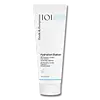What's inside
What's inside
 Key Ingredients
Key Ingredients

 Benefits
Benefits

 Concerns
Concerns

No concerns
 Ingredients Side-by-side
Ingredients Side-by-side

Water
Skin ConditioningC15-19 Alkane
SolventGlycerin
HumectantCaprylic/Capric Triglyceride
MaskingPEG/PPG/Polybutylene Glycol-8/5/3 Glycerin
HumectantIsosorbide Dicaprylate
Skin ConditioningEctoin
Skin ConditioningXylitylglucoside
HumectantBisabolol
MaskingAllantoin
Skin ConditioningAnhydroxylitol
HumectantXylitol
HumectantHydroxyethyl Acrylate/Sodium Acryloyldimethyl Taurate Copolymer
Emulsion StabilisingAmmonium Acryloyldimethyltaurate/Vp Copolymer
Glucose
HumectantCitric Acid
BufferingTocopherol
AntioxidantEthylhexylglycerin
Skin ConditioningPhenoxyethanol
PreservativeWater, C15-19 Alkane, Glycerin, Caprylic/Capric Triglyceride, PEG/PPG/Polybutylene Glycol-8/5/3 Glycerin, Isosorbide Dicaprylate, Ectoin, Xylitylglucoside, Bisabolol, Allantoin, Anhydroxylitol, Xylitol, Hydroxyethyl Acrylate/Sodium Acryloyldimethyl Taurate Copolymer, Ammonium Acryloyldimethyltaurate/Vp Copolymer, Glucose, Citric Acid, Tocopherol, Ethylhexylglycerin, Phenoxyethanol
Water
Skin ConditioningC12-13 Alkyl Lactate
EmollientCitric Acid
BufferingDipropylene Glycol
HumectantCyclopentasiloxane
EmollientSodium Hydroxide
BufferingGlycerin
HumectantMethyl Methacrylate Crosspolymer
Zinc Gluconate
Skin ConditioningSalicylic Acid
MaskingArachidyl Alcohol
EmollientDimethicone
EmollientBehenyl Alcohol
EmollientGlyceryl Stearate
EmollientPEG-100 Stearate
Silica
AbrasiveXanthan Gum
EmulsifyingArachidyl Glucoside
EmulsifyingC30-45 Alkyl Cetearyl Dimethicone Crosspolymer
EmollientHydroxyethyl Acrylate/Sodium Acryloyldimethyl Taurate Copolymer
Emulsion StabilisingGlycyrrhetinic Acid
Skin ConditioningSqualane
EmollientBakuchiol
AntimicrobialSodium Metabisulfite
AntioxidantXylitol
HumectantPropylene Glycol
HumectantPolysorbate 60
EmulsifyingSorbitan Isostearate
EmulsifyingFructooligosaccharides
HumectantMannitol
HumectantPropyl Gallate
AntioxidantCaprylic/Capric Triglyceride
MaskingGinkgo Biloba Leaf Extract
Skin ConditioningRhamnose
HumectantLaminaria Ochroleuca Extract
Skin ConditioningParfum
MaskingWater, C12-13 Alkyl Lactate, Citric Acid, Dipropylene Glycol, Cyclopentasiloxane, Sodium Hydroxide, Glycerin, Methyl Methacrylate Crosspolymer, Zinc Gluconate, Salicylic Acid, Arachidyl Alcohol, Dimethicone, Behenyl Alcohol, Glyceryl Stearate, PEG-100 Stearate, Silica, Xanthan Gum, Arachidyl Glucoside, C30-45 Alkyl Cetearyl Dimethicone Crosspolymer, Hydroxyethyl Acrylate/Sodium Acryloyldimethyl Taurate Copolymer, Glycyrrhetinic Acid, Squalane, Bakuchiol, Sodium Metabisulfite, Xylitol, Propylene Glycol, Polysorbate 60, Sorbitan Isostearate, Fructooligosaccharides, Mannitol, Propyl Gallate, Caprylic/Capric Triglyceride, Ginkgo Biloba Leaf Extract, Rhamnose, Laminaria Ochroleuca Extract, Parfum
 Reviews
Reviews

Ingredients Explained
These ingredients are found in both products.
Ingredients higher up in an ingredient list are typically present in a larger amount.
This ingredient is an emollient, solvent, and texture enhancer. It is considered a skin-softener by helping the skin prevent moisture loss.
It helps thicken a product's formula and makes it easier to spread by dissolving clumping compounds.
Caprylic Triglyceride is made by combining glycerin with coconut oil, forming a clear liquid.
While there is an assumption Caprylic Triglyceride can clog pores due to it being derived from coconut oil, there is no research supporting this.
Learn more about Caprylic/Capric TriglycerideCitric Acid is an alpha hydroxy acid (AHA) naturally found in citrus fruits like oranges, lemons, and limes.
Like other AHAs, citric acid can exfoliate skin by breaking down the bonds that hold dead skin cells together. This helps reveal smoother and brighter skin underneath.
However, this exfoliating effect only happens at high concentrations (20%) which can be hard to find in cosmetic products.
Due to this, citric acid is usually included in small amounts as a pH adjuster. This helps keep products slightly more acidic and compatible with skin's natural pH.
In skincare formulas, citric acid can:
While it can provide some skin benefits, research shows lactic acid and glycolic acid are generally more effective and less irritating exfoliants.
Most citric acid used in skincare today is made by fermenting sugars (usually from molasses). This synthetic version is identical to the natural citrus form but easier to stabilize and use in formulations.
Read more about some other popular AHA's here:
Learn more about Citric AcidGlycerin is already naturally found in your skin. It helps moisturize and protect your skin.
A study from 2016 found glycerin to be more effective as a humectant than AHAs and hyaluronic acid.
As a humectant, it helps the skin stay hydrated by pulling moisture to your skin. The low molecular weight of glycerin allows it to pull moisture into the deeper layers of your skin.
Hydrated skin improves your skin barrier; Your skin barrier helps protect against irritants and bacteria.
Glycerin has also been found to have antimicrobial and antiviral properties. Due to these properties, glycerin is often used in wound and burn treatments.
In cosmetics, glycerin is usually derived from plants such as soybean or palm. However, it can also be sourced from animals, such as tallow or animal fat.
This ingredient is organic, colorless, odorless, and non-toxic.
Glycerin is the name for this ingredient in American English. British English uses Glycerol/Glycerine.
Learn more about GlycerinThis is a synthetic polymer. It helps improve the texture of products by adding thickness and gel-like feel.
It is also an emulsifer, meaning it prevents ingredients such as oil and water from separating. It also helps evenly disperse other ingredients.
Water. It's the most common cosmetic ingredient of all. You'll usually see it at the top of ingredient lists, meaning that it makes up the largest part of the product.
So why is it so popular? Water most often acts as a solvent - this means that it helps dissolve other ingredients into the formulation.
You'll also recognize water as that liquid we all need to stay alive. If you see this, drink a glass of water. Stay hydrated!
Learn more about WaterXylitol is a humectant and prebiotic. It can help with dry skin.
In studies, xylitol has been shown to improve dry skin. It decreased transepidermal water loss, or when water passes through the skin and evaporates. Xylitol also showed to help improve the biomechanical properties of the skin barrier.
The prebiotic property of xylitol may also help reinforce our skin's natural microbiome. Having a healthy microbiome prevents infection by bad bacteria and helps with hydration.
As a humectant, Xylitol helps draw moisture from both the air and from deeper skin layers. This helps keep skin hydrated.
Xylitol is a sugar alcohol and commonly used as a sugar substitute. It is naturally occurring in plants such as strawberries and pumpkin.
Learn more about Xylitol